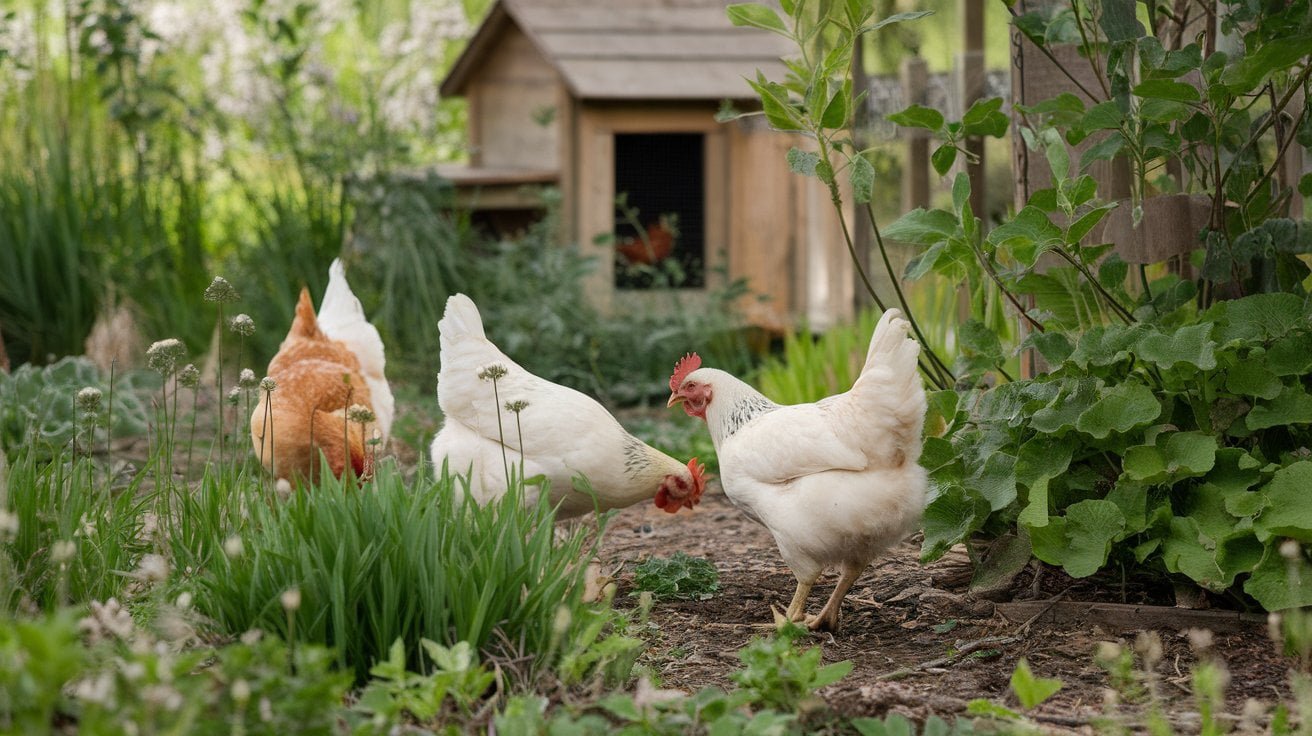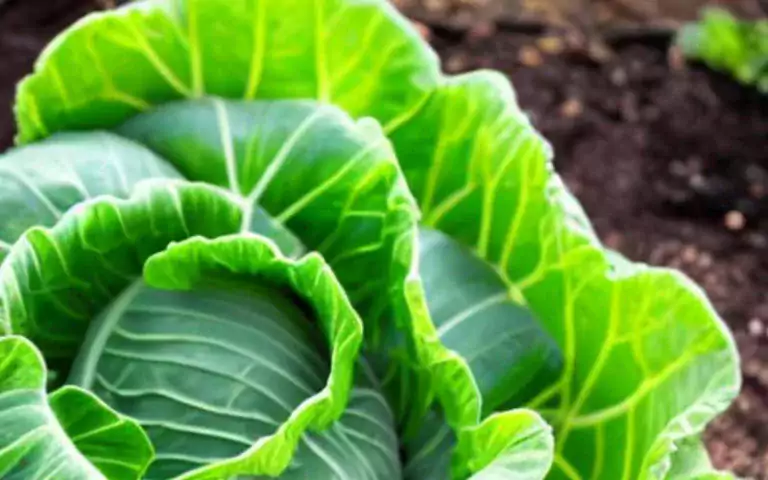Wild Garlic For Chickens: Can Chickens Eat Wild Garlic?
Just a heads up, this post contains some affiliate links. That means that we earn a small commission if you buy the product at no extra cost to you. That allows us to continue to research and share interesting articles with you. :)
If you’ve ever foraged for wild herbs in your garden, you may have come across wild garlic—a pungent, aromatic plant often used in natural cooking. Its distinct scent and flavour make it a favourite for everything from pesto to soups. But what happens when your curious chickens peck at this fragrant greenery? As backyard chicken owners, it’s not uncommon to wonder whether the plants growing in your garden are safe for your flock, and as chickens tend to love greenery, can our chickens eat wild garlic?
Wild garlic, also known as Allium ursinum, is a perennial plant often found in woodlands and shaded areas. It grows abundantly across the UK and can sometimes make its way into your garden or chicken run. Known for its strong garlicky smell and delicate white flowers, wild garlic can be a wonderful addition to your kitchen, but is it safe for chickens?
The short answer is yes, chickens can technically eat wild garlic but with some caution. While it’s not considered toxic to poultry, feeding them too much can lead to unwanted side effects. Chickens, like most animals, are instinctive eaters and will often avoid what’s bad for them. However, if they consume wild garlic in excess, it could affect the taste of their eggs and potentially upset their digestion.
Before you let your chickens forage freely around wild garlic, there are a few things to consider. From the potential impact on egg flavour to health concerns, it’s important to understand the balance between safety and risk when it comes to your flock’s diet.
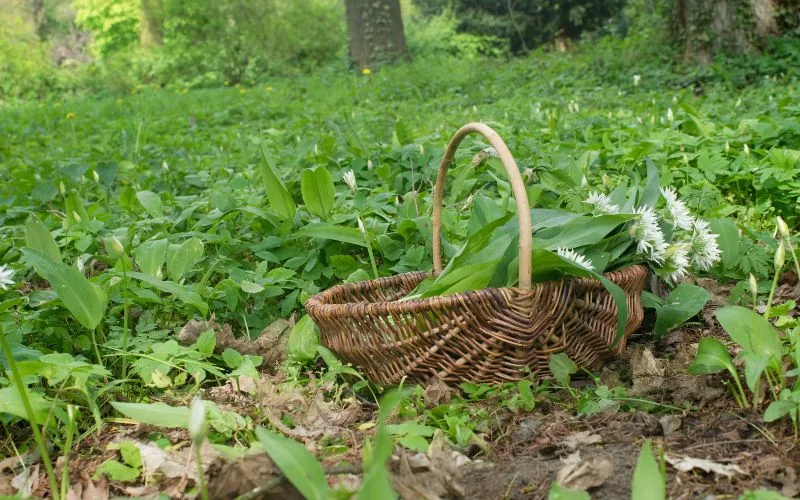
What Is Wild Garlic?
Wild garlic, scientifically known as Allium ursinum, is a perennial plant native to Europe and Asia, commonly found in damp woodlands, riverbanks, and shaded areas. In the UK, it grows abundantly in the wild, often creating a lush green carpet in early spring. The plant has long, pointed leaves that resemble lily-of-the-valley, with a distinctive garlicky aroma that gives it its name. Wild garlic produces delicate white star-shaped flowers in clusters, which are also edible, making it easy to identify by both sight and smell.
One of the most noticeable features of wild garlic is its smell. If you walk through a patch of this plant, you’ll often catch its pungent, garlicky scent in the air long before you spot it. The leaves, flowers, and bulbs are all edible, though the leaves are the most commonly used part for culinary purposes. Unlike its cultivated garlic counterpart, Allium sativum, wild garlic has a milder taste, with a slightly grassy flavour that adds a subtle depth to dishes.
When identifying wild garlic, look for its broad, smooth, vibrant green leaves, which grow from the base of the plant in clumps. It thrives in moist, shady environments and usually grows in large patches, making it easy to harvest. However, caution is needed as its leaves can sometimes be mistaken for poisonous plants like lily-of-the-valley. The key distinguishing feature is that unmistakable garlic smell—crush the leaves in your hand, and the scent will quickly tell you if you’ve found the right plant.
Edible and Medicinal Uses for Humans
For humans, wild garlic is a fantastic addition to any self-sufficiency garden. It’s rich in vitamins A and C, as well as essential minerals such as iron, magnesium, and selenium. These nutrients make it a popular choice for those interested in natural remedies and a nutrient-dense diet. Its leaves are often used to make pestos, soups, salads, and sauces, offering a fresh, mildly garlicky flavour without the intensity of traditional garlic cloves.
Beyond its culinary uses, wild garlic has a long history in herbal medicine. Known for its antibacterial, antiviral, and antifungal properties, it has been traditionally used to treat a variety of ailments. Wild garlic can help boost the immune system, lower blood pressure, and improve digestion. Its natural health benefits make it an attractive option for those living a homesteading or self-reliant lifestyle, where natural, homegrown remedies are highly valued.
For the self-sufficiency enthusiast, wild garlic is not only a versatile ingredient but also a low-maintenance plant that grows well in shady corners of a garden. Its ability to thrive without much intervention makes it a great choice for those looking to add edible perennials to their garden that contribute both to culinary and medicinal needs. However, while it’s a fantastic herb for human consumption, moderation is key when it comes to feeding it to animals, such as chickens, which may experience different effects from the plant.
Is Wild Garlic Safe for Chickens?
When it comes to feeding chickens wild garlic, moderation is key. As with many herbs, wild garlic is generally considered safe for chickens in small quantities, and its antibacterial and antiviral properties may even provide some health benefits. However, caution should be exercised to ensure they don’t consume too much. Unlike humans, chickens have different dietary needs, and certain plants, while beneficial to us, can affect their health in unexpected ways.
In small amounts, wild garlic isn’t toxic to chickens, but it should be offered sparingly as part of a varied diet. Chickens are naturally good foragers, and they tend to avoid foods that could be harmful. Still, they might occasionally nibble on wild garlic if they come across it in the garden, particularly if they’re curious or bored. While this shouldn’t cause immediate harm, regular consumption in larger quantities can lead to potential issues. Like onions and garlic, wild garlic contains compounds that can affect the blood and digestive system of chickens if consumed in excess.
The most important thing to remember is balance. Chickens thrive on a diet rich in grains, greens, insects, and other foraged materials, but overfeeding them any one plant, especially those from the Allium family, can upset that balance and lead to unwanted side effects. It’s best to limit access to wild garlic patches or only offer it occasionally as a treat mixed with other safe greens like dandelion leaves or chickweed.
Wild Garlic Effects on Chickens
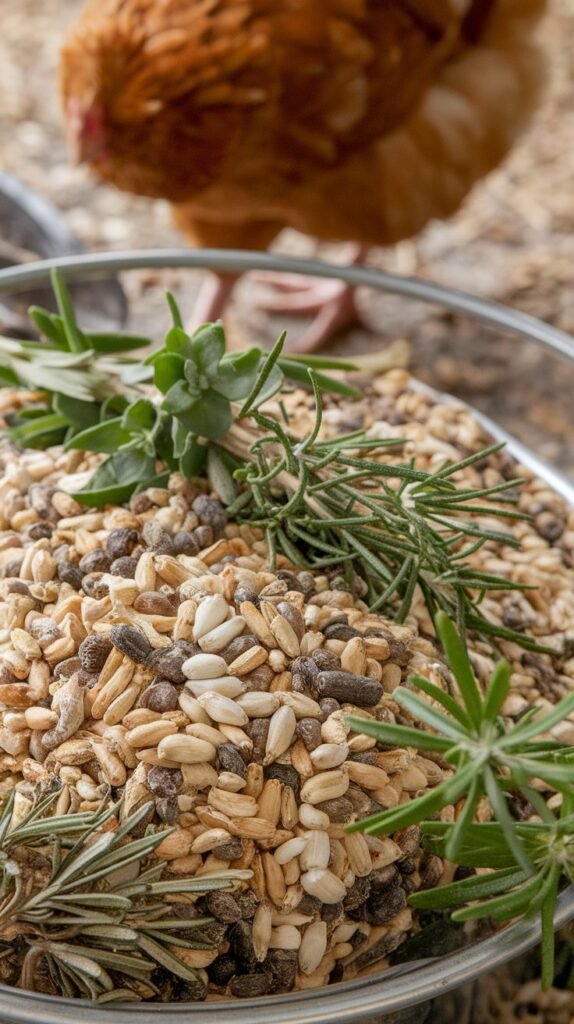
One of the primary concerns with chickens eating wild garlic in large amounts is the potential impact on the taste of their eggs. Garlic, whether cultivated or wild, can impart a noticeable flavour to eggs, resulting in a strong, sometimes unpleasant garlicky taste. While this might sound like an interesting culinary experiment, it’s usually not what most chicken owners are looking for when gathering fresh eggs. If you notice a change in the flavour of your chickens’ eggs, it could be a sign that they’ve been eating too much wild garlic.
Beyond the flavour of eggs, wild garlic, like other members of the Allium family, contains thiosulfates—compounds that, in large amounts, can cause oxidative stress on red blood cells. This can lead to a condition called hemolytic anaemia, where red blood cells break down faster than they are produced. While this is a more common concern with onions and garlic, wild garlic also contains these compounds, albeit in smaller concentrations. If consumed in significant quantities over time, it could potentially cause weakness, lethargy, or pale combs and wattles in chickens, which are signs of anaemia.
Digestive upset is another potential issue. Chickens that consume too much wild garlic might experience mild gastrointestinal distress, such as loose droppings or a decrease in appetite. If you notice any changes in their behaviour or digestion after they’ve foraged on wild garlic, it’s best to remove access to the plant and monitor them closely.
Though cases of toxicity from wild garlic in chickens are rare, it’s important to stay vigilant. Chickens are generally resilient creatures, but their small size means they can be more susceptible to dietary imbalances or overconsumption of certain foods. To avoid any health concerns, ensure that wild garlic is just a small part of their foraging experience and that it doesn’t become a regular part of their diet.
In summary, wild garlic can be a safe treat for chickens if consumed in moderation. It’s important to be mindful of how much they are eating to avoid any adverse effects, from egg flavour changes to more serious health concerns like anaemia or digestive upset. If you’re ever in doubt, it’s best to err on the side of caution and limit your flock’s exposure to wild garlic, ensuring their overall diet remains balanced and varied for optimal health.
Benefits of Wild Garlic for Chickens
Health Boost in Small Doses
While wild garlic may seem like an unusual addition to a chicken’s diet, it does offer some notable benefits when consumed in small amounts. One of the most appealing aspects of wild garlic is its natural antibacterial, antiviral, and antifungal properties. Similar to cultivated garlic, wild garlic contains sulfur compounds, such as allicin, which have been shown to boost immune health. These compounds can help chickens ward off infections and fight harmful bacteria in their gut, supporting a healthier immune system overall.
For chickens, who are often exposed to various pathogens through foraging and close living conditions, the immune-boosting qualities of wild garlic can provide a natural line of defense. Although not a replacement for veterinary care or a balanced diet, small amounts of wild garlic can offer an additional layer of protection, especially during times of stress when chickens may be more susceptible to illness, such as moulting or colder months.
In fact, many chicken owners already use garlic supplements, like garlic powder, to boost their flock’s health. Wild garlic offers similar benefits but in a natural, foraged form. However, because of its strong properties, it’s important to keep the amount in check, ensuring chickens don’t overindulge and potentially upset the balance of their diet.
Improved Pest Control
Another potential benefit of wild garlic for chickens comes from its strong odour. The pungent scent of garlic, whether wild or cultivated, is often used as a natural deterrent against pests in gardens, and this property could extend to your chicken coop as well. Some chicken owners believe that adding small amounts of garlic to their chickens’ diet helps deter internal parasites, while others claim that wild garlic planted near the coop may discourage mites, lice, and other pests.
Although there is limited scientific evidence to confirm garlic’s effectiveness as a pest deterrent for chickens, its use as a natural repellent in gardens is well documented. The strong smell of wild garlic might help reduce the presence of some pests around your chickens, creating a more comfortable and hygienic living environment for your flock.
In practice, combining wild garlic with other safe herbs, like mint or lavender, may help create a natural pest management strategy for your coop. Additionally, the health-boosting properties of garlic could make your chickens less attractive hosts for parasites, contributing to their overall well-being.
If you’re dealing with mites or other pests around your chickens, a diatomaceous earth feed supplement is a fantastic natural solution I’ve found useful. It’s 100% natural and has been used for over a century to treat all sorts of creeping and crawling insects. What’s great is that it’s feed grade, meaning it’s perfectly safe to mix into your chickens’ feed, helping to address internal issues as well as external pests like mites and fleas.
The way it works is quite clever—it’s made from fossilized algae, and when the powder comes into contact with insects, it damages their exoskeletons and effectively kills them. It’s non-toxic, making it safe for both animals and humans, which is reassuring when using it around the coop. I would usually sprinkle it in their bedding or directly on affected areas. It’s slower-acting than chemical treatments but so much healthier for the chickens and the environment.
How Much Wild Garlic Can Chickens Eat?
Recommended Amount
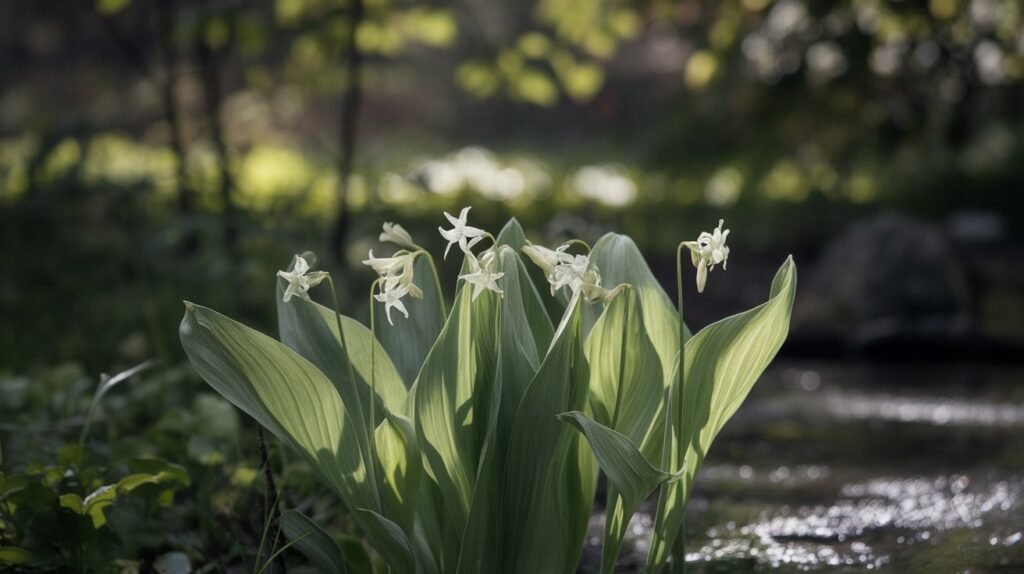
When it comes to feeding wild garlic to chickens, moderation is the golden rule. While small amounts of wild garlic can offer health benefits, overconsumption can lead to unwanted side effects. As a general guideline, wild garlic should only be a small part of your chickens’ foraging diet—think of it as an occasional treat rather than a staple.
A few leaves of wild garlic mixed into their regular greens or scattered around the yard for them to nibble on is likely enough to provide benefits without overwhelming their system. For a small flock of five to ten chickens, offering wild garlic once a week is a reasonable amount. Keep an eye on their behaviour, and if you notice any changes in appetite, droppings, or egg flavour, it’s best to cut back.
If your chickens have access to a garden where wild garlic grows freely, consider limiting their time in that area or cutting back the plants to prevent them from overindulging. It’s also worth rotating different herbs to avoid overwhelming their diet with one particular plant, ensuring a balanced intake of nutrients.
Alternatives to Wild Garlic

If you’re looking for herbs to regularly supplement your chickens’ diet, there are plenty of safer options that can offer health benefits without the risks associated with strong-tasting plants like wild garlic.
- Oregano: Known for its powerful antimicrobial properties, oregano is a fantastic herb to add to your chickens’ diet. Studies have shown that it can help improve gut health and protect against infections, making it a popular choice for natural poultry care.
- Thyme: This aromatic herb has antibacterial and antifungal properties, making it another excellent option for promoting your chickens’ health. Thyme can be mixed into their feed or grown around the coop for them to forage on.
- Dill: Rich in antioxidants and vitamins, dill can help boost a chicken’s digestive health and is a safe, mild herb for regular consumption.
- Mint: Not only does mint add variety to their diet, but its strong smell can also help repel insects and pests around the coop, making it a dual-purpose herb for chicken owners.
These herbs, when introduced in moderation, offer a safe and beneficial way to support your chickens’ health without the potential drawbacks of wild garlic. By rotating these herbs and offering them alongside fresh greens and a balanced diet, you can ensure your chickens stay healthy and thriving.
If you’re looking to naturally boost your chickens’ health and support their overall wellness, I’ve had great success with Henny’s Super Herb Booster by Rosewood Naturals. It’s a blend of 13 edible herbs and flowers, all packed with beneficial phytonutrients. What I love most about it is how it promotes a healthy immune system with ingredients like sage and tarragon, and it’s also believed to support laying performance with herbs like parsley and fennel. Plus, the calendula and rosemary help encourage those extra-yellow yolks we all love to see!
I would mix a teaspoon or two into my chickens’ feed, and they seemed to enjoy it. It’s an easy, natural way to give their diet a little boost, and it leaves me feeling confident that I’m supporting their health in the best way possible.
Practical Tips for Chicken Owners
Monitoring and Moderation
If your chickens have access to wild garlic, it’s important to keep an eye on how much they’re consuming. Regularly inspect the areas where they forage, and if wild garlic is growing freely, consider limiting their time there. Alternatively, you can trim back the plants to control how much your chickens can access. Watch for changes in egg flavour, digestion, or behaviour—any signs of overconsumption should prompt you to reduce their access.
How to Incorporate Herbs into Their Diet Safely
To safely incorporate herbs into your chickens’ diet, start by introducing small amounts of safe herbs like oregano, thyme, and mint. You can mix fresh or dried herbs into their feed or scatter them in the coop. Rotating herbs ensures a variety of health benefits and keeps your chickens’ diet balanced.
Conclusion
Wild garlic can be a beneficial addition to your chickens’ diet, but only when offered in moderation. While it isn’t toxic in small amounts, overconsumption can lead to issues like egg flavour changes and digestive upset. Monitoring your flock and ensuring variety in their foraging habits will help keep them healthy.
Keeping your flock happy and healthy takes a little knowledge and careful attention. As always, moderation is the key to ensuring they enjoy the benefits without the risks! Assess your garden spaces and consider incorporating a variety of safe herbs to boost your chickens’ health.
Next Steps and Call-to-Action
We’d love to hear your experiences! Have you tried adding wild garlic or other herbs to your chickens’ diet? Share your stories with our community or ask more questions about safe foraging. For more tips, check out our articles on “herbs for chickens” or “safe plants for backyard poultry.”
Back To The Good Life is a participant in the Amazon Services LLC Associates Program, an affiliate advertising program designed to provide a means for sites to earn advertising fees by advertising and linking to Amazon.com. We also participate in other affiliate programs which compensate us for referring traffic.

